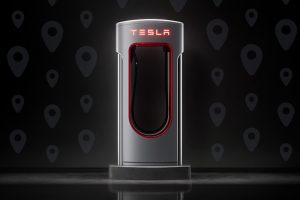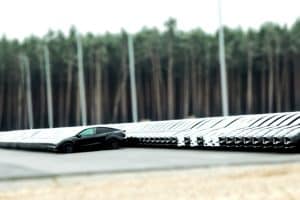The electric vehicle sector would be wise to brace for an insane expansion of the Tesla Supercharger Network. As reported by local media outlets on Tuesday, Tesla’s Supercharger V3 Factory in Shanghai had been fully completed as of August 20, 2021. The facility, which is capable of producing 10,000 Supercharger V3 stalls per year, would play a key role in the company’s aggressive expansion of its rapid-charging network.
With the facility fully completed, Tesla’s ramp of the Supercharger Network would likely become much faster than ever before. This would be incredibly advantageous for the company, particularly as CEO Elon Musk has noted that Tesla would be opening its Supercharger Network to non-Tesla EVs around the end of the year. To avoid overcrowding in its existing Superchargers, the company must have a way to ensure that it has a steady supply of rapid charging stalls to install.
This is where the Supercharger V3 factory in China comes in. Tesla currently operates about 25,000 Superchargers worldwide. And while this number seems incredibly small compared to the number of gas stations across the globe, the Supercharger Network already stands as one of the most expansive and reliable rapid charging systems for electric vehicles in the market. Having a facility that could add 10,000 more Superchargers every year would then be extremely beneficial.
Considering the output of the Supercharger V3 factory in Shanghai, Tesla would likely be able to double the number of its existing rapid chargers worldwide in just a few years. And this is assuming that Tesla does not build any more Supercharger V3 factories. If the company constructs comparable factories with similar capacities, then it would likely be just a matter of time before Tesla Superchargers become as ubiquitous as gas stations today.
What is particularly impressive about Tesla’s Supercharger V3 factory is that it is a rather simple facility that covers only about 5,000 sqm (about 54,000 square feet). That’s not a small area by any means, but it is very compact compared to Tesla’s other facilities. Even the Kato Road site, which hosts the pilot line of the 4680 cells, is over three times bigger at 180,000 square feet. It is then quite impressive that Tesla is able to produce 10,000 Supercharger V3 stalls from such a compact space.
Tesla has not announced further plans to build more dedicated Supercharger V3 factories. But considering that the facility in Shanghai was completed in a relatively small area, it would not be surprising if Tesla starts integrating Supercharger production in some of its key manufacturing sites in the future. Giga Texas and Giga Berlin would likely be frontrunners for such an initiative, as they could certainly spare the space for a facility that could add 10,000 more Superchargers to the company’s network annually.





